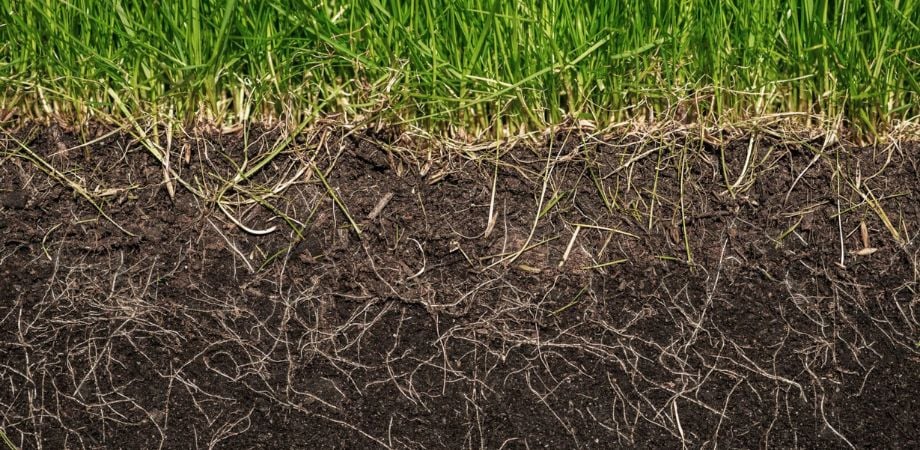Fall is commonly associated with colorful leaves and cooler temperatures, but lawn care operators know that turf diseases are another hallmark of the season. While there are many diseases that can affect your customers’ lawns, dollar spot, leaf spot, powdery mildew, and rust are four you’ll likely come across.
Dollar Spot
What is Dollar Spot?
Dollar spot is a fungal disease that causes small, brown and/or bleached spots to appear on grass blades, and these damaged areas can die if they’re left untreated.
What Causes Dollar Spot?
Dollar spot is caused by fungi of the Clarireedia genus, which thrive in hot and humid conditions. Their spores are easily spread by water, wind, and traffic.

Symptoms of Dollar Spot
Small, tan lesions will appear on individual blades of grass, which then grow into circular patches ranging from one to three inches in diameter—around the size of a U.S. silver dollar. These spots can then merge over time to create larger patches. During wet, dewy conditions, mycelium may appear on infected areas.
How to Treat Dollar Spot Fungus
Lawns with nitrogen deficiencies are especially susceptible to dollar spot, so ensuring that your customers’ lawns are properly fertilized and watered is the first line of defense against dollar spot. If you have visited a dollar spot-affected property, be sure to clean off mowers and shoes to prevent the fungus from being spread from lawn to lawn. For chemical control, apply a broad-spectrum fungicide like Pillar SC or Lexicon.
Leaf Spot
What is Leaf Spot?
Leaf spot is a fungal disease that causes dark-colored spots to form on turf. The spots gradually increase in size as the disease progresses. If left untreated, the turf may die.
Symptoms of Leaf Spot
Leaf spot initially presents as small, dark lesions on grass blades. The lesions then expand into larger, irregularly shaped spots that develop a light, tan center and dark-colored border. These spots are often surrounded by a yellowish halo. As the disease progresses, the spots will merge together and cause further damage, killing turf in severe cases.
A similar disease known as ‘melting out’ can also occur in the fall. This disease affects the crown and other vital areas near the base of the plant, causing a red-colored rot to appear, which can cause turf death.

How Leaf Spot Disease Forms and Spreads
Leaf spot primarily targets cool-season grasses. In the fall, it often appears on bermudagrass during cool, wet periods. This is when the fungi begin to grow and produce spores, which are then spread by wind and rain to healthy turf.
How to Treat Leaf Spot Disease
Mow frequently and stay on top of watering to keep turf as healthy as possible. Avoid heavy nitrogen applications, as excessive nitrogen can promote disease growth on susceptible turf. A fungicide like Fame SC will provide preventative control of both leaf spot and melting out.
Powdery Mildew
What is Powdery Mildew?
Powdery mildew is a fungal disease that occurs on grass blades and the leaves of ornamentals. If left untreated, turf affected by powdery mildew will often turn yellow and die, while the leaves of ornamentals will yellow and drop prematurely.
What Does Powdery Mildew Look Like?
Powdery mildew causes a thin, white coating of fungus to appear on the upper surfaces of leaves and on top of grass blades. The fungus has a chalky appearance—similar to flour or powdered sugar—and is dry to the touch. It, like leaf spot, can be spread by wind and rain.

How to Get Rid of Powdery Mildew
Powdery mildew thrives in cool, humid conditions, especially in shaded areas. Pruning plants—especially those that don’t receive much sunlight—will increase air circulation and can help prevent powdery mildew. On turf, avoid excessive nitrogen applications and water shaded areas in moderation to discourage fungal growth. A curative fungicide containing the active ingredient propiconazole, like PPZ 143, can eliminate the disease on turf and ornamentals. For additional options, reach out to your ATS rep.
Rust
What is Rust?
Rust, staying true to its name, is a fungal disease that causes rust-like orange/brown spores to appear on blades of grass. If left untreated, blades can be completely overtaken by the fungus, which can prevent them from standing up straight. Affected areas will also become weak, opening the door to other issues.
What Causes Rust on Grass?
Rust is caused by fungal spores of the Puccina genus that thrive in dry, humid conditions. These spores spread by air, water, and traffic. Rust primarily affects cool-season turf types, often appearing in shady areas and on nitrogen-deficient turf.

Symptoms of Rust
The disease causes yellowish growths to appear on grass blades, which then release spores with a powdery, rust-like appearance. Rust can cause turf growth to slow down, too.
How to Treat Rust on Grass
To treat rust, apply a nitrogen-rich fertilizer and mow regularly to reduce spore buildup. Proper irrigation can also help, so encourage your customers to water their lawns regularly. Fungicides like Zoxy-PG can be applied to treat turf with severe symptoms, but cultural practices are often the best way to prevent and control rust.
Fall turf diseases can harm your customers’ lawns, but with the right approach and products, they won’t stand a chance. Make disease care easy this fall, and reach out to your ATS rep to discuss your options. Need a rep? You can find one by entering your ZIP code here.












